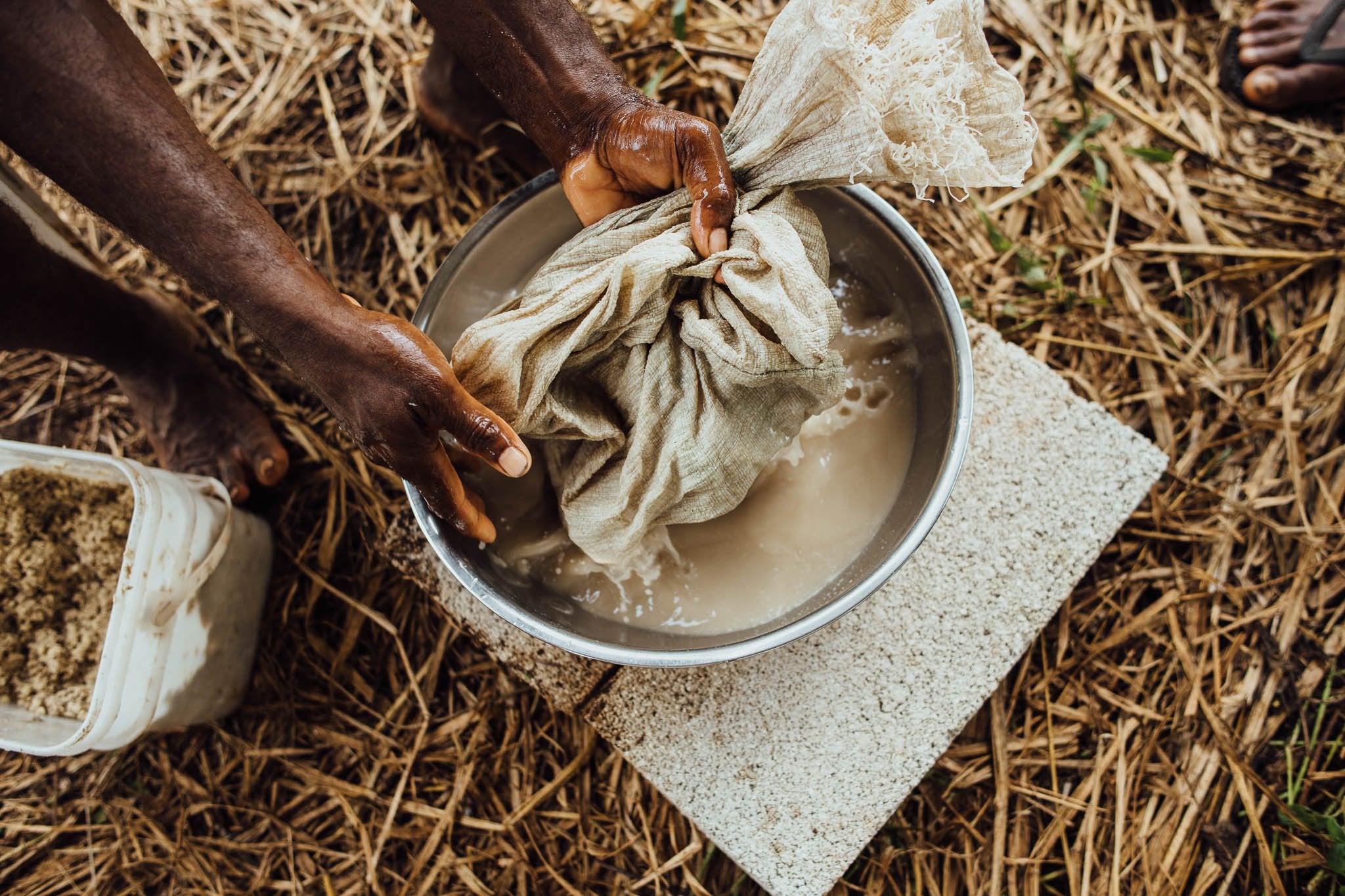When Less is More: Making the Most of Your Kava with the Right Ratio and Consumption Pace
When it comes to kava most people agree that the quality and type of your roots is of paramount importance. At the most basic level, one needs to ensure kava is safe to consume (free from any contaminants, processed in a hygienic environment). But beyond these basics, the selection of the right cultivar grown for an appropriate amount of time in the right environment, care and attention to detail during harvest, post-harvest processing, ensuring appropriate drying, grinding, packing procedures etc all determine the degree to which a given kava can offer a good experience.
We agree and this is why we’ve been working so hard on both selecting the finest kava cultivars in the world (read more about our cultivars here) and on ensuring all of our kava is processed from freshly harvested roots, using the most advanced and fit-for-purpose techniques and equipment in a dedicated, food-grade facility (you can read more about how our kava gets processed here - it’s quite amazing how much effort goes into making pure and clean kava powder that retains incredible freshness and properties of freshly harvested plants).
How you prepare and drink your kava matters as much as what kava you drink
However, with all the focus on the quality of kava and the unique features of each cultivar, one can sometimes overlook another important factor that determines the quality of kava experience: the way in which kava is prepared and consumed. We don’t just mean whether or not one knows how to prepare kava correctly (as per our suggested basic instructions), but rather how to adjust your kava “recipe” and consumption style to best fit your needs and desired experience.
A few years ago we wrote a blog post about different cultures of drinking kava and how the way in which kava is prepared and drunk by different people can affect their experience. Today’s blog post is a sort of follow up that older post, but with a greater focus on practical implications for those who enjoy kava at home.
As we noted in our older post, one can consume the same total amount of kava, but depending on how concentrated the beverage is and how quickly (or slowly) it is consumed, it can produce different effects and be suitable for different uses/occasions. Throughout Polynesia and in Fiji drinkers tend to prefer more dilluted kava that they enjoy for hours as a social lubricant/accompaniment for social and cultutal gathering. In Vanuatu (the birthplace of kava), kava is consumed fresh (green), in a much more concentrated form and over a much shorter window. This results in a more intense and ultimately inward focused, meditative experience. We encourage you to re-read our old blog post to understand these differences styles and cultures of kava drinking better, but the general point is that while the general principles regarding kava preparation are fairly universal (i.e. kava is made by mixing roots with water and straining them with a strainer), water-to-root ratios and the ways in which one consumes the drink can make a huge difference.
In practical terms, the same powder can produce a range of experiences depending on how one chooses to prepare and drink it, while still adhering to the basics. Things get slightly more complicated when one considers that different cultivars may be better suited for different approaches when it comes to preparation and consumption. What is more, we are all different so everyone responds a bit differently to different methods. This all just means that it’s a good idea to experiment a bit (or quite a bit) with your preparation method and adjust it depending on your needs, circumstances and occasions.
Examples of different drinking styles for different purposes
If you drink kava by yourself, at home and your key intention is to experience the pleasant, uplifting/euphoric and yet relaxing “kava buzz” offered by some of the headier kava cultivars (such as Kelai, Puariki, Palarasul), the best way to do it would be use less powder but in a more concentrated form and consumed more rapidly. In this sense, less kava can actually produce a more desirable experience. For instance, you can vigorously mix 35 grams of kelai with just 500-600ml of water and separate the resulting kava into two/max three large servings. Consuming them relatively quickly (with a short break in between servings) will maximise the kavain-centric profile of these kavas and will deliver a strong “punch”. It will be a more intense, albeit shorter-lasting experience. By contrast, drinking even much higher quantitites of powders made using these cultivars slowly and heavily diluted is unlikely to produce the kind of uplifting effect heady kavas are generally sought for. The concentrated and rapid way of drinking smaller quantities of kavain-rich kavas may be less suitable for long conversations or lengthy socialising. It is however supremely suitable for “listening to the kava”, a pleasant, even if short-lived contemplative state of open, slow and yet crystal clear mind. It’s a great way to reset one’s mental chatter after a long day, but one that can then easily be followed by a meal or a movie night. One tends to feels very fresh and rested the next day.
Monday social kava at the Four Shells Kava Lounge in Auckland
By contrast, if you want to socialise over kava/consume it with friends, you might either use a heady cultivar, or a more heady-balanced one (e.g. Bir Kar, Melo Melo), but dilute it with more water and drink it more slowly. These cultivars are known to be “creepers”, with some effects taking a while longer build up. After many months of experimentation with our partner kava lounge in Auckland (the Four Shells Kava Lounge) we came up with a perfect selection of cultivars AND a perfect ratio of roots to water that works great in a kava bar set up. While Vanuatu kava bars tend to serve very strong, fresh green kava, they also known as quiet places that, in line with the kava drinking style, close their doors relatively early. Initially, the Four Shells Lounge was inclined to adopt the Vanuatu kava bar style, but cultural expectations and environment here in Aotearoa New Zealand meant that over time we figured most people sought a more social experience, with bar often being open till late and featuring some (gentle) live music or socio-cultural events. We kept using the same kava cultivars, but adopted the ratios and recommended consumption pace to fit better into this type of environment. For those who want to experience the Vanuatu-style drinking, the bar offers more concentrated versions of kava and special shells, but most customers seem to prefer the social style of drinking.
Finally, those who seek a more sedating experience, should not just choose a heavier cultivar (e.g. Borogoru), but also drink it both more slowly AND ensure you drink it well-before going to sleep. The calming, sedating effects take time to manifest themselves and drinking heavier kavas rapidly or heavily concentrated, particularly immediately before going to bed, would reduce their sleepy/more deeply relaxing character. Indeed, some people make the mistake of preparing a few strong servings of Borogoru immediately before going to bed hoping this would provide them with a restful night. Quite often the very opposite happens. Concentrated, rapid consumption of heavier cultivars brings its (generally less prominent) uplifting elements to the forefront, while the time between consumption and hitting the bed is just too short for the deeper, more relaxing properties to manifest themselves.
In conclusion, how you prepare and drink your kava matters as much as what kava you choose to drink. We’ve suggested a few different approaches, but everyone is different, so don’t be afraid to experiment and try to find your own perfect recipes and styles of drinking. Kava can be an incredible versatile plant that accommodates various needs and occasions. By learning how to attain different effects by playing with water-to-root ratios and speed of consumption you can often get more of your kava and make it even more enjoyable and aligned with your lifestyle and preferences.







Leave a comment
This site is protected by hCaptcha and the hCaptcha Privacy Policy and Terms of Service apply.